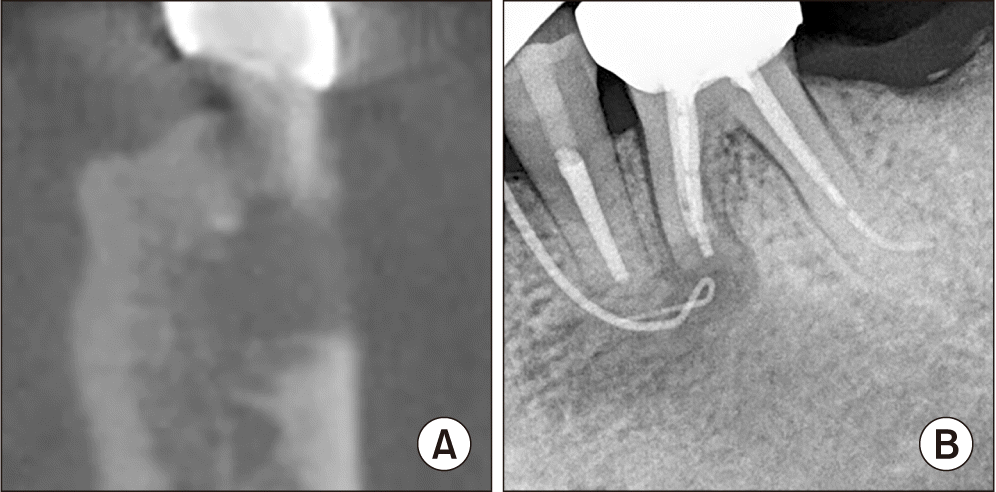9. García CC, Sempere FV, Diago MP, Bowen EM. 2007; The post-endodontic periapical lesion: histologic and etiopathogenic aspects. Med Oral Patol Oral Cir Bucal. 12:E585–90.
10. Angerame D, De Biasi M, Lenhardt M, Porrelli D, Bevilacqua L, Generali L, et al. 2022; Root-end resection with or without retrograde obturation after orthograde filling with two techniques: a micro-CT study. Aust Endod J. 48:423–30.
https://doi.org/10.1111/aej.12634. DOI:
10.1111/aej.12634. PMID:
35665570.

18. Cohen S, Burns RC. 1998. Pathways of the pulp. 7th ed. Mosby.
21. Peñarrocha-Oltra D, Soto-Peñaloza D, Peñarrocha-Diago M, Cervera-Ballester J, Cabanes-Gumbau G, Peñarrocha-Diago M. 2020; Hemostatic agents in endodontic surgery of maxillary molars: a randomized controlled pilot study of polytetrafluoroethylene (PTFE) strips as an adjunct to epinephrine impregnated gauze versus aluminum chloride. Med Oral Patol Oral Cir Bucal. 25:e634–43.
https://doi.org/10.4317/medoral.23652. DOI:
10.4317/medoral.23652. PMID:
32683388. PMCID:
PMC7473427.

23. Amador-Cabezalí A, Pardal-Peláez B, Quispe-López N, Lobato-Carreño M, Sanz-Sánchez Á, Montero J. 2022; Influence of the retrograde filling material on the success of periapical surgery. Systematic review and meta-analysis by groups. Coatings. 12:1140.
https://doi.org/10.3390/coatings12081140. DOI:
10.3390/coatings12081140.






 PDF
PDF Citation
Citation Print
Print





 XML Download
XML Download